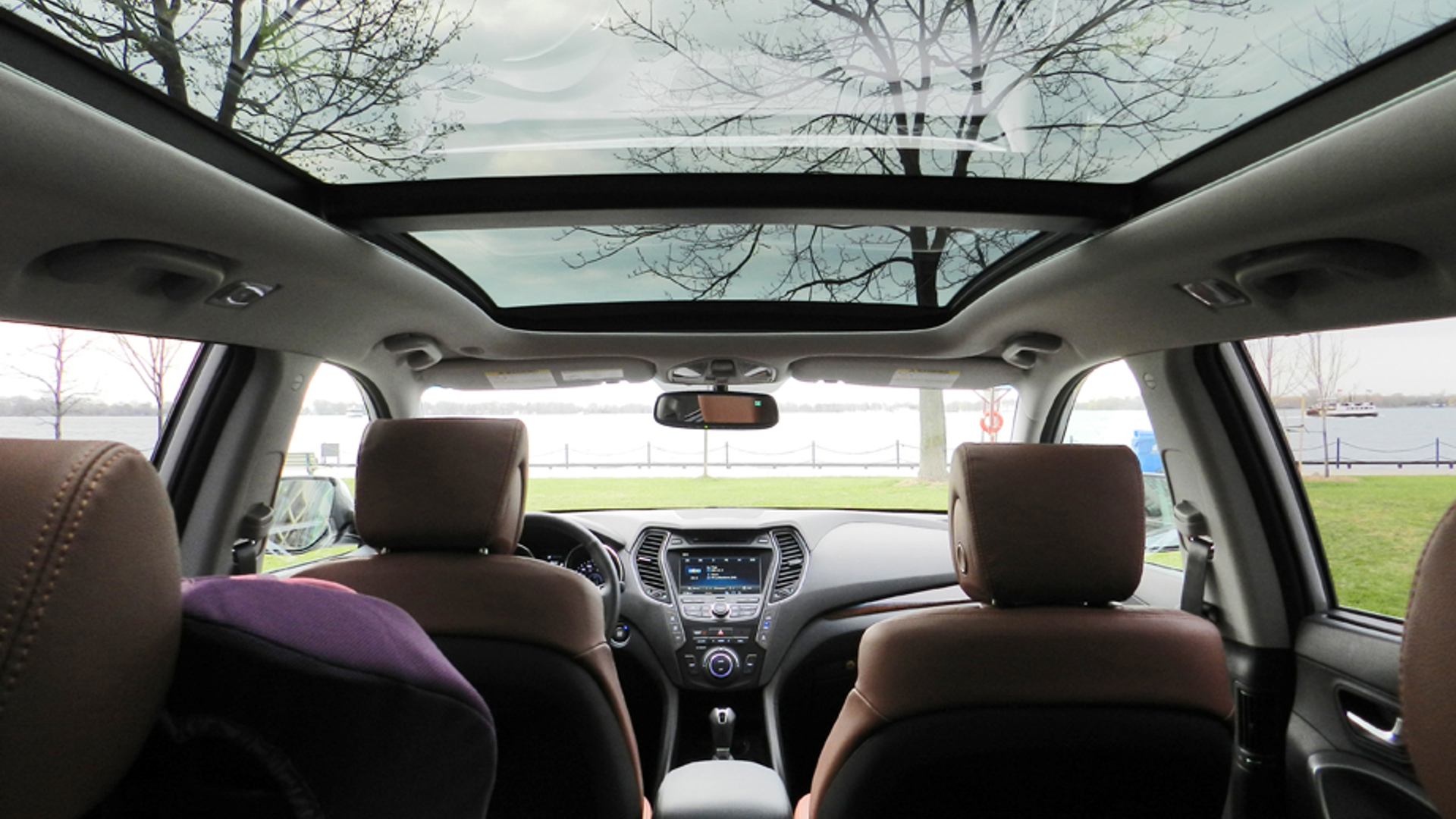My father is ultra-bald. He’s also a sun-protection enthusiast, and a sunroof enthusiast, and someone who has spent many hours per week driving beneath a (closed) glass sunroof in his various vehicles over the years.
Dad is our family’s sunblock police. As (fair-skinned, red-headed) kids, my siblings and I weren’t allowed to leave the house on sunny days until dad saw us slather ourselves to completion with a double-coating of high-SPF sunblock. We’re adults now, and dad still brings sunblock to outdoor family gatherings, carrying a small tube of Coppertone on his keychain, in case anyone needs it.
“Got your sunblock on, guys?”

My dad loves many things, and wearing lots of sunblock is high on that list of things.
You can imagine the family’s surprise when dad recently had a skin cancer growth (successfully) removed from his scalp – which is the first part of dad to receive a thick layer of SPF 90 when he goes outdoors. Often, he puts his hat on over top of that.
But dad rarely bothered with the sunblock, or the hat, while enjoying his sunroof-equipped cars (Honda Civic Si, Subaru Legacy GT, VW Tiguan, Honda CR-V) over the years. That’s because dad thought the glass panel from his sunroof would protect him from the sun. Turns out, that probably wasn’t the case.
Sun and Cancer

Skin cancer can come about in various ways, but the main culprit, by a landslide, is the sun.
“The harmful UV rays that reach the earth from the sun are divided into UVB and UVA,” explains dermatologist Dr. Michelle Levy. “All of a car’s windows filter out the sun’s UVB rays, but not all windows will protect from all UVA rays”.
Dr. Levy says that the most important risk factor for the development of skin cancer is sun exposure.
“About 90 percent of skin cancers are caused by the sun,” she says. “People who have fair skin and blue eyes, and those who burn easily, are at higher risk. Living in a warm, sunny climate will also increase one’s risk because of increased exposure.”
According to Dr. Levy, sun exposure through the sunroof glass was, in all likelihood, a leading factor contributing to dad’s skin cancer growth. His follicular situation, as well as the choice to use baby oil instead of sunblock in his younger years, were others.

“There is data indicating that male pattern baldness is associated with a higher risk of skin cancer on the scalp,” adds Dr. Levy. “In my practice, I see far more sun damage and skin cancer involving the scalp in individuals who have lost their hair, than in men and women who haven’t.”
Without a thick noggin-full of luscious locks, dad doesn’t have the benefit of some built-in sun protection enjoyed by people with hair.
“There are several different types of skin cancer,” Dr. Levy adds.
“The most common are basal cell carcinomas, followed by squamous cell carcinomas, sometimes collectively known as non-melanoma skin cancer. These types of skin cancers are much more common in areas that are frequently exposed to the sun, such as the face, scalp, chest, and the back of the hands. Melanoma is a more dangerous type of skin cancer, and most melanomas are more common in areas that are exposed to the sun less frequently, and may be more prone to intermittent sunburns. These include areas like the back, or the legs.”
Not All Glass is Created Equal

The facts about sun protection offered up by the glass in your vehicle are clear: though all vehicles vary to some degree, Levy cites a 2016 study that indicates front windshields blocked about 96 percent of UVA rays – although the coverage offered by other automotive glass tended to be lower, at about 71 percent.
Translation? UV protection may vary widely by vehicle make and model.
For instance, the sunroof glass used in a new Volvo XC90 blocks “at least 99.5 percent” of UV radiation, according to the automaker.
Brad Evans, Subaru Canada’s Car Line Manager adds, “Automotive glass is designed to block most (and in some cases, all) of the sun’s UV rays. Windshield glass must be laminated in new vehicles and therefore offers the most protection due to the film used between the glass layers. This glass typically blocks 100 percent of UV rays. Side, rear, and roof glasses can all have varying amount of UV protection depending on glass thickness, lamination, or tint. All of these glasses, however, offer some level of protection, anywhere from 65 percent to 100 percent.”

Most of the windows on most cars and truck offer some UV protection, but this varies between vehicles. Drivers should understand that the windows in their vehicle likely block some portion of cancer-causing UV rays, but exposure, even in semi-filtered amounts, is still dangerous when it comes to skin cancer.
“Even with a high degree of filtration of UV, some will still reach the skin,” Dr. Levy comments. “For these reasons, it is advisable that drivers protect themselves with sun-protective clothing and sunscreens. Aftermarket UV films are also available, and may be advisable for those who spend a great deal of time in their cars.”
Based on this advice, Dad has recently installed a special aftermarket coating to the sunroof glass in his Tiguan, which blocks 100 percent of the incoming UV rays.

This stuff doesn’t just apply to long-distance drivers, like truckers, either. My father would typically spend about three hours a week in his car, with the sunroof shade open (and glass panel closed, or vented slightly) as often as possible. But there’s no time limit that’s necessarily “safe” when it comes to sun exposure and skin cancer, especially on vulnerable individuals.
Dr. Elaine McWhirter, a medical oncologist, says, “Sun safety with either sunscreen or SPF clothing really applies to anyone who spends a fair amount of time in their car – even commuters.”
Dr. McWhirter notes that left-arm cancer is more common in North America, where the driver’s left arm is exposed to the sun more often – either by hanging it out of the window, or resting it nearby. In countries where drivers are positioned on the right-hand side of the vehicle, instances of skin cancer on the arm tend to be more right-arm heavy.
An Ounce of Prevention...

Remember – the side windows of your vehicle likely don’t offer as much protection from the sun as its windshield. And even that windshield may not block all of the harmful UV rays.
Case in point: your writer, who spends about 10 hours a week driving left-side drive vehicles, recently received some tattoos on his left arm. The freshly inked areas are incredibly sensitive to sun exposure for the first month or two, and pain appears within seconds of exposure in the early weeks. In summer, I use a white, UV-blocking fabric sleeve while driving to keep the sun away from my new ink. After forgetting to wear it one day, just 90 seconds of sun exposure through the (closed) side window of a new BMW resulted in sharp, searing pain from the sun, followed by a visible blister.
Dr Levy adds, “The side windows, and presumably the sunroof glass, are made of tempered glass, which allows more UVA penetration. This may be particularly relevant to the question of the bald driver and increased skin cancer risk. My experience as someone who treats with highly sun-sensitizing medications is that the car provides basically no protection – they still burn in minutes!”

So, don’t count on the glass in your vehicle to protect you from harmful UV rays. As likely evidenced by my bald and sunroof-loving father’s situation, the same level of sun protection and care of exposed skin is vital, even while you’re encased in a glass and sheetmetal vehicle.
Thankfully, protecting yourself is easy.
“The number one thing that people can do to reduce their risk of skin cancer is to protect their skin from the sun’s harmful rays. This means using sun-protective clothing, hats, sunglasses, and sunscreen, and seeking shade whenever possible,” Levy comments.
And don’t forget to protect yourself even on cloudy days – as a generous portion of the sun’s UV rays can penetrate cloud cover. This is the reason why your writer (often to the bewilderment of YouTube commenters) wears sunglasses at all times while he’s outside, even if it’s cloudy.
For more information on protecting your skin, see melanomanetwork.ca.









